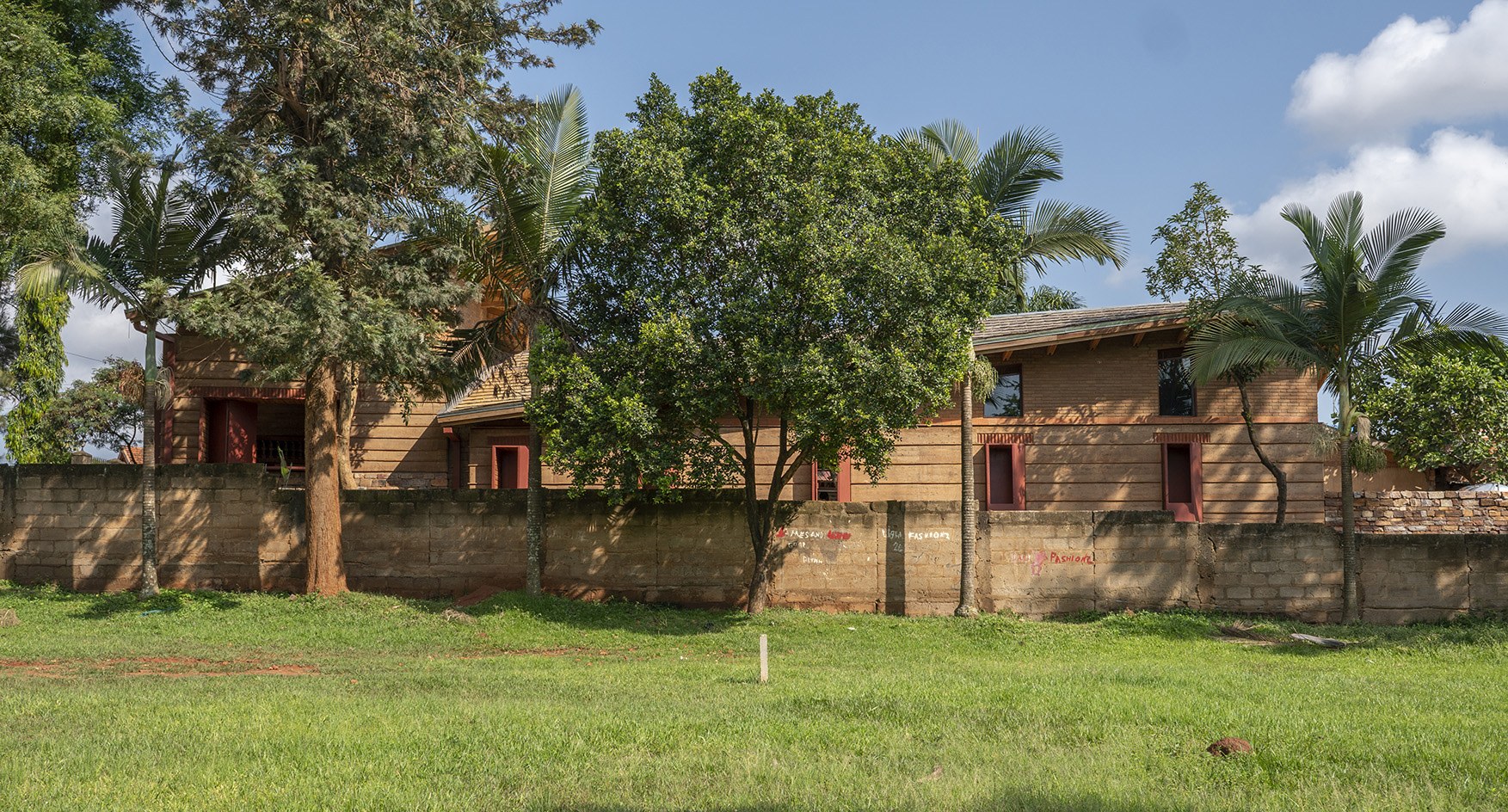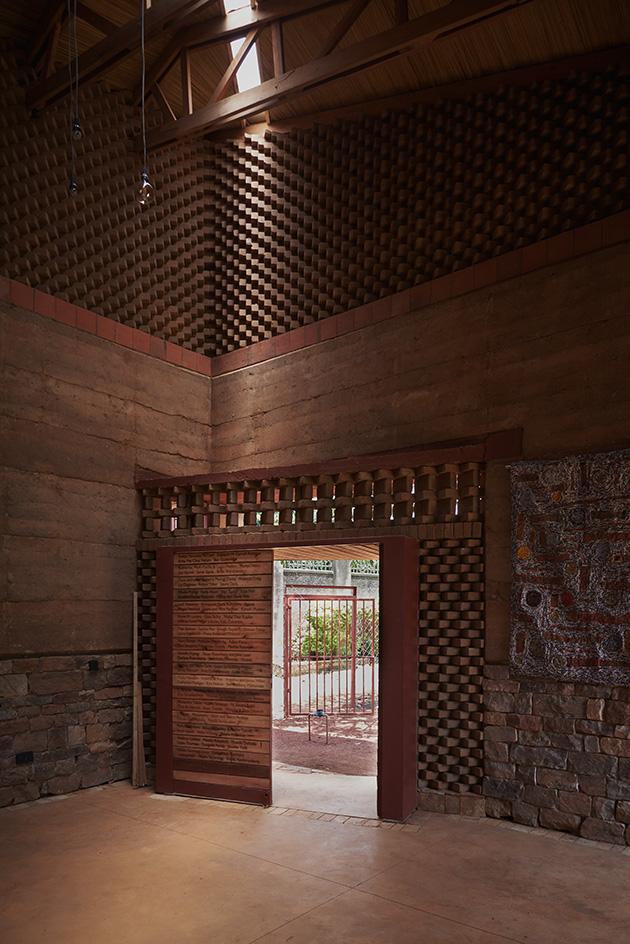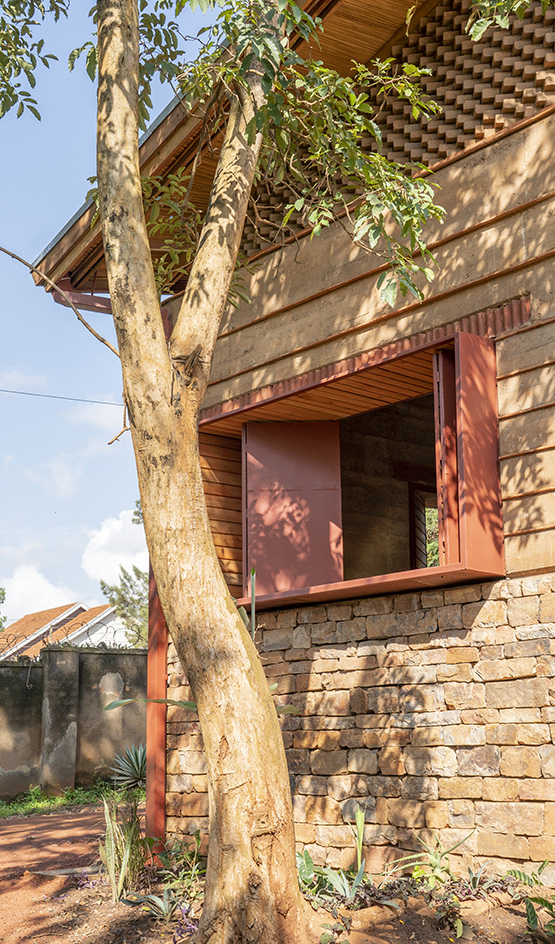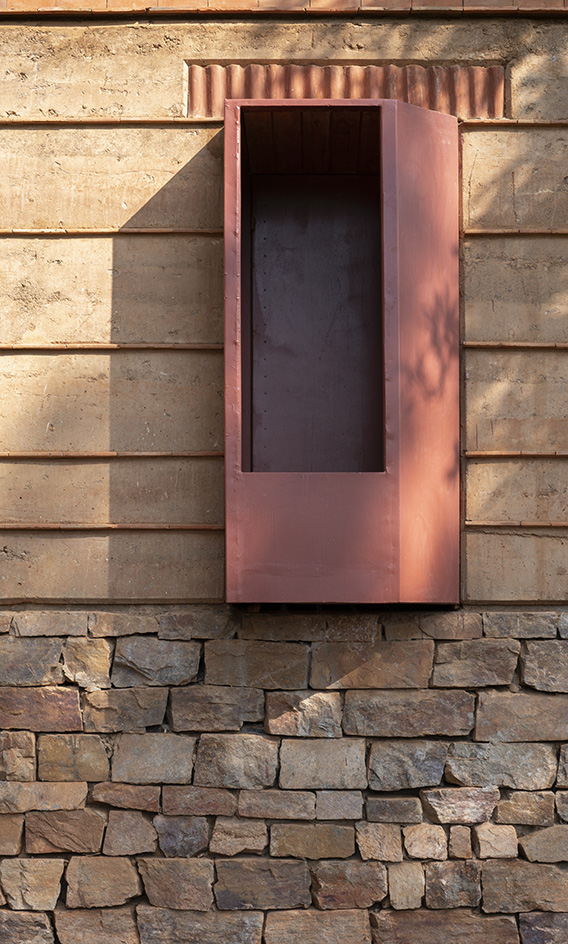Kampala art centre is conceived as a nurturing community space
A new Kampala art centre designed by New Makers Bureau and Localworks opens in Uganda, promising a nurturing space for its community and visitors; welcome to 32° East Arts Centre

A new Kampala art centre cuts a fine figure in the Ugandan capital. London-based New Makers Bureau has built a richly patterned new home for a local arts trust, 32° East, from materials excavated from the site itself – earth, wood and reclaimed brick.
The studio drew on the heritage of earth building in the region, creating Uganda’s first purpose-built community art space in the city's Kabalagala neighbourhood, while taking inspiration from the Lalibela churches of Ethiopia – sunken, rock-hewn structures created by subtracting material beneath the ground to reveal the forms. ‘We took cues from the idea of archaeology and excavation, literally mining the site for material,’ says founding director James Hampton.

Kampala art centre by New Makers Bureau
New Makers Bureau collaborated with Kampala-based design and build firm Localworks – an expert in earth construction – on the project, digging holes in the site to excavate the clay-heavy soil. They mixed it with lime and sand to create low-carbon, rammed earth walls for the first phase of 32° East Arts Centre’s development, comprising a café, interim gallery, art library and four studios, arranged around a courtyard.
A small portion of cement (6%) was used as a stabiliser for the walls, which were shaped in formwork made from wood salvaged from a dilapidated building on site and later reused for the roofs. Brick from the redundant structure was used as fill and aggregate.

‘Our brief was to create a new hub for 32° East that would be sustainable, both ecologically and financially,’ says Hampton. The warm climate meant no insulation was required, so the rammed earth walls could be left exposed internally, and the building features almost no glazing, save for some slim polycarbonate skylights in the art studios. To prevent erosion in the rainy seasons, the earth building sits on a base of local sandstone and features large roof overhangs, which also provide generous shading from the punishing equatorial sunshine.

The sandstone and rammed earth are topped by compressed earth bricks, again made from the soil from the site. An open, hit and miss pattern in the brickwork provides dappled light and texture. ‘The building gets more expressive as it gets taller,’ says Hampton, pointing to the twisted angles of the two roof pitches, the highest of which creates a clear entrance to the building.

This playfulness is part of the DNA of New Makers Bureau. Hampton founded the practice in 2020 to bring a new sense of craftsmanship and expression to cultural buildings, schools and homes, while working with hyperlocal materials that are low in embodied carbon. He designed 32° East Arts Centre on a pro bono basis.
Receive our daily digest of inspiration, escapism and design stories from around the world direct to your inbox.

The building is conceived as a nurturing space for Kampala’s artist community and visitors to meet, work, socialise and exchange ideas. Its second phase, due to be completed in late 2024, will encompass a gallery, four guest rooms for artists, studios, offices and kiosks, which will generate income for the not-for-profit organisation, helping the centre to be self-sufficient.

Malaika Byng is an editor, writer and consultant covering everything from architecture, design and ecology to art and craft. She was online editor for Wallpaper* magazine for three years and more recently editor of Crafts magazine, until she decided to go freelance in 2022. Based in London, she now writes for the Financial Times, Metropolis, Kinfolk and The Plant, among others.
-
 Curvilinear futurism meets subtropical beaches at Not A Hotel’s ZHA-designed Okinawa retreat
Curvilinear futurism meets subtropical beaches at Not A Hotel’s ZHA-designed Okinawa retreatZaha Hadid Architects has revealed the design for the first property in Not A Hotel’s futuristic new Vertex collection, coming soon to southern Japan
-
 Gorden Wagener leaves the helm of Mercedes-Benz design after 28 years with the company
Gorden Wagener leaves the helm of Mercedes-Benz design after 28 years with the companyThe German designer is stepping down from the role of chief design officer at Mercedes-Benz. We look back at his influence and impact on the world of automotive and luxury design
-
 These Christmas cards sent by 20th-century architects tell their own stories
These Christmas cards sent by 20th-century architects tell their own storiesHandcrafted holiday greetings reveal the personal side of architecture and design legends such as Charles and Ray Eames, Frank Lloyd Wright and Ludwig Mies van der Rohe